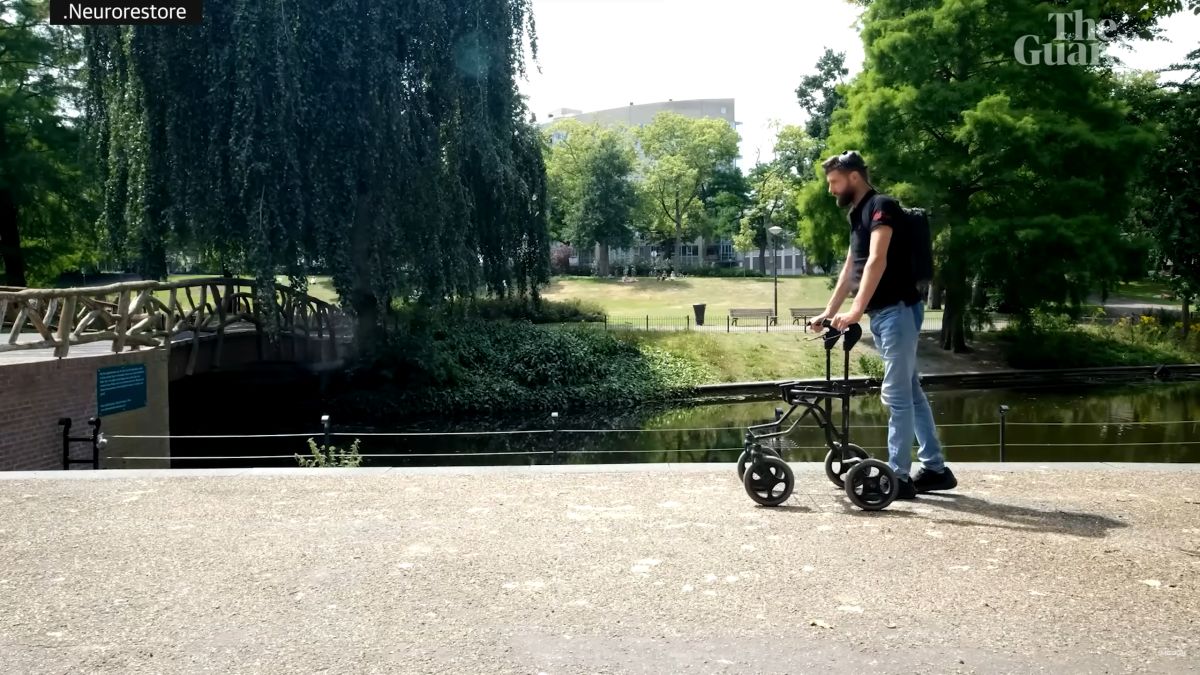A paralysed man received the gift of mobility recently, after going under the knife and receiving computerised implants. The inserted implants were done as part of a trial involving brain-spin interface (BSI).
Gert-Jan Oskam, who became paralysed in 2011 due to a cycling accident that broke his neck, was told that he would never be able to walk again due to the accident, but he persevered and regained limited mobility through an experimental neurorehabilitation program of electronic stimulation. Then, after three years of no changes, Oskam agreed to become a test subject in the new trial BSI.

The BSI procedure that would allow Oskam to go from paralysed to moving again required a set of implants – they were computerised electrodes – to be installed into his brain and spine. The idea here is that these electrodes read his brain wave and detects neural activity whenever he tries to move his legs. Those reads are then beamed to a computer inside a backpack he carries on his back, where an algorithm transforms them into signals and sends them to the electrodes inside his spine. That then stimulates the muscles to produce the intended movement.
To put that in layman terms: the BSI procedure basically allow Oksam to walk, just by thinking of the action. Now, we should note that his movements are still limited and not as dynamic; he still requires the assistance of a walking stick or roller, but on the upside, Oksam was able to walk 100m on flat surfaces in the initial stages. Having said that, the trial does bring us one step closer to the technological Singularity.

A year into the implants and as of today, Oksam says that BSI implants are now allowing him to walk around 300 feet daily and he is capable of completing a broader range of other tasks that would have otherwise required assistance.
(Source: The Guardian via YouTube, Techspot)
Follow us on Instagram, Facebook, Twitter or Telegram for more updates and breaking news.


